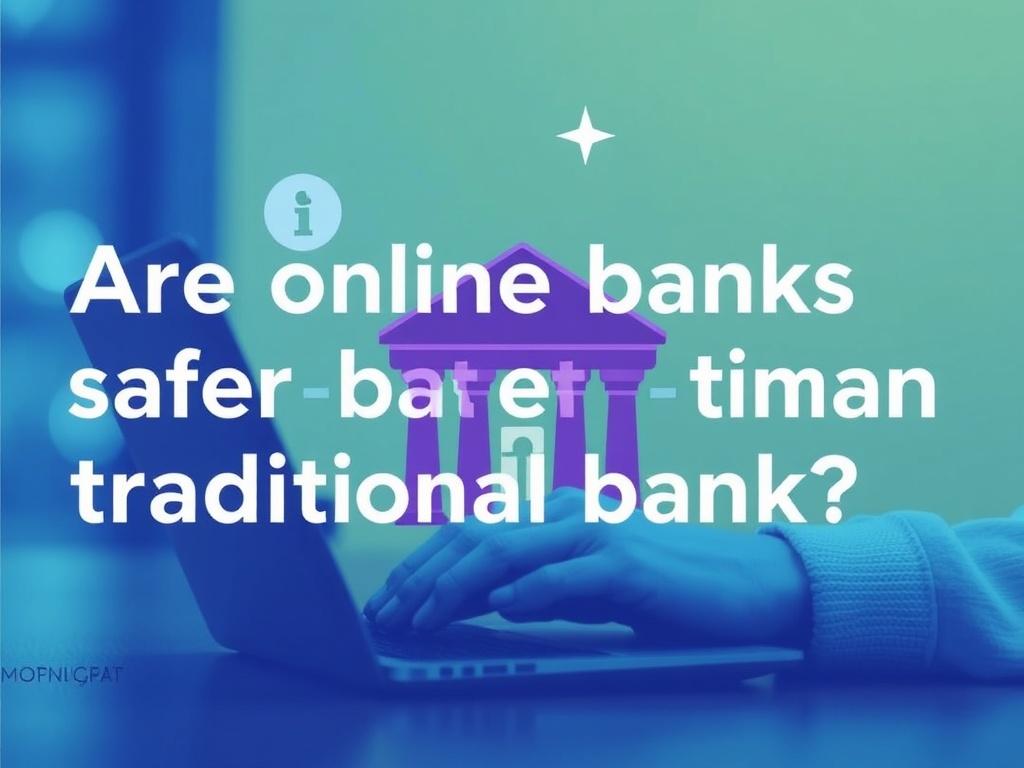SQLITE NOT INSTALLED
In today’s digital age, banking has transformed dramatically. What once meant visiting a brick-and-mortar branch is now as simple as opening an app on your phone. Yet, as online banks become increasingly popular, a critical question arises: Are online banks safer than traditional banks? This topic touches on trust, security, convenience, and technology—key considerations for anyone managing their money. Let’s explore what makes both online and traditional banks tick and compare their safety measures so you can make an informed choice.
Содержание
Understanding the Basics: What Are Online Banks and Traditional Banks?
Before diving into security, it’s helpful to clarify the distinction between online banks and traditional banks.
Traditional banks are financial institutions with physical locations where you can walk in and talk to a teller, deposit or withdraw money, and perform various banking transactions. These banks have been around for centuries and include major players like Chase, Wells Fargo, and Bank of America. They offer a broad range of services, including personal loans, mortgages, credit cards, and investment advice.
Online banks, on the other hand, operate entirely on the internet. They do not have physical branches, which is why you can only access their services through apps or websites. Examples include Ally Bank, Chime, and Discover Bank. Online banks often have fewer fees and higher interest rates on savings accounts because they save money on physical infrastructure.
The Safety Framework: What Keeps Banks Secure?

Regardless of the type of bank, safety hinges on several key factors:
- Federal Deposit Insurance Corporation (FDIC) Insurance: This protects your deposits up to $250,000 per depositor, per bank, even if the bank fails.
- Regulatory Oversight: Banks must comply with strict regulations designed to protect consumers.
- Security Technologies: These include encryption, firewalls, two-factor authentication, and biometric login systems.
- Fraud Detection and Monitoring: Banks continuously monitor accounts for suspicious activities and alert customers.
- Physical and Cybersecurity Measures: Traditional banks have physical vaults and security personnel, while online banks focus heavily on cybersecurity protocols.
Given these shared safety pillars, the next logical question is: How well do online and traditional banks measure up against these standards?
Comparing Security: Online Banks vs. Traditional Banks

Security is a multi-dimensional concept, especially when comparing online with traditional banks. Let’s break down the main areas of concern.
1. FDIC Insurance and Regulation
Both online and traditional banks are insured by the FDIC up to $250,000 per depositor, per institution. This means that sponsored online banks often function as legitimate, regulated banks just like their traditional counterparts. The key is checking that your online bank is indeed insured and regulated—most reputable ones are transparent about this.
2. Cybersecurity Measures
Online banking’s biggest vulnerability is cyber threats. Because these banks operate entirely online, they must invest heavily in advanced encryption technologies, multi-factor authentication (MFA), biometric logins, and real-time fraud detection systems. Many online banks prioritize cutting-edge technology more aggressively because their business depends solely on digital trust.
Traditional banks, by contrast, use cybersecurity but also benefit from physical security layers. However, their legacy systems can sometimes be more vulnerable to hacking compared to newer platforms built from scratch with modern security frameworks.
3. Accessibility and Physical Safety
Traditional banks offer physical branches, which can be reassuring for some. If something goes wrong with your account, you can visit in person to resolve the issue. Physical presence also means there are reassuring security measures like vaults, safes, and undercover cash handling processes.
Online banks lack branches, so physical security is less relevant, but they operate 24/7 without the need to visit a location. In case of security issues, support is usually via phone, chat, or email, which might not feel as direct as face-to-face interaction.
4. Account Recovery and Customer Support
Recovering your account after a security breach is crucial. Traditional banks might offer easier recovery through branch visits, but online banks tend to have rapid digital processes for identity verification and fraud resolution, often available around the clock.
5. Fraud Detection and Prevention
Both types of banks deploy AI-driven fraud detection systems, but some online banks may have an edge given their digital-first nature, allowing real-time transaction monitoring without the constraints of legacy infrastructure.
Common Security Features You Should Look For
Regardless of the bank you choose, here’s a handy checklist of security features you should expect:
| Security Feature | Purpose | Typical Use in Banks |
|---|---|---|
| FDIC Insurance | Protect deposits if the bank fails | Standard for all federally insured banks |
| Multi-Factor Authentication (MFA) | Enhances login security with multiple verification steps | Common in online banks; increasingly used by traditional banks |
| Encryption | Secures data transmission between you and the bank | Universal across all banks; varies in strength |
| Biometric Authentication | Uses fingerprints, facial recognition for login | More prevalent in online banks’ mobile apps |
| Fraud Monitoring Systems | Detect suspicious transactions in real-time | Both types of banks use AI and algorithms |
| Physical Security | Prevents theft and physical breaches | Exclusive to traditional banks |
Pros and Cons: Which Bank Is Safer for You?
When weighing safety, it’s important to understand the advantages and disadvantages that come with each banking model.
Traditional Banks: Pros and Cons
- Pros: Physical branches offer face-to-face support and physical safeguards. Long-established brands may inspire greater trust. Convenient for cash deposits and withdrawals.
- Cons: Some legacy systems may be vulnerable to cyber-attacks. Limited banking hours. Potentially higher fees due to operational costs.
Online Banks: Pros and Cons
- Pros: Advanced cybersecurity protocols and constant updates. Accessibility anytime, anywhere. Lower fees and higher interest rates on savings. Rapid fraud detection enabled by AI.
- Cons: No physical branches for in-person support. Reliance on internet connectivity and smartphones. Some users may feel uneasy about entrusting money solely to a digital setup.
Security Myths About Online Banks Debunked
Many people hesitate to switch to online banks due to persistent myths:
Myth 1: Online Banks Are Not Regulated
Fact: Most online banks hold proper licenses and are overseen by regulatory bodies. They adhere to the same standards as traditional banks.
Myth 2: Online Banks Are Easy Targets for Hackers
Fact: While cyberattacks exist everywhere, online banks often implement more stringent, modern security measures tailored to an entirely digital environment.
Myth 3: You Can’t Recover Your Money If Something Goes Wrong
Fact: FDIC insurance protects deposits, and online banks have customer service teams trained to assist with recovery and fraud claims.
Tips to Stay Safe When Using Any Bank
No matter where you bank, your safety also depends on your habits. Here are simple but essential precautions:
- Use strong, unique passwords for your accounts.
- Enable multi-factor authentication whenever possible.
- Monitor your accounts regularly for suspicious activity.
- Avoid using public Wi-Fi when accessing financial apps or websites.
- Stay informed about phishing scams and never share sensitive info by email or text.
- Keep your devices and apps updated with the latest security patches.
The Future of Banking Security: What’s on the Horizon?
Banking security is rapidly evolving, driven by advances in technology. Biometrics, artificial intelligence, and blockchain are transforming the industry. Online banks are often pioneers in adopting these innovations, but traditional banks are catching up fast. For example, some traditional banks now offer biometric ATM access or AI-powered fraud alerts.
Furthermore, open banking initiatives, which allow third-party apps to securely access and analyze your banking data, will offer increased personalization and control, but they will also demand even stronger security practices.
Final Thoughts: Trust, Technology, and Your Money

Choosing between an online bank and a traditional bank isn’t solely about which is safer in theory but also what fits your lifestyle and comfort level. Online banks use cutting-edge security technologies and meet regulatory standards, making them a safe choice, particularly for tech-savvy customers who value convenience and cost savings. Traditional banks offer the reassurance of physical presence and a long-standing relationship history which many find comforting.
By staying informed about the security features offered and adopting good personal security practices, you can enjoy safe banking no matter which type you choose.
Conclusion
In summary, are online banks safer than traditional banks? The short answer is that both types of banks are equally safe when it comes to regulatory protections like FDIC insurance and fundamental security protocols. Online banks tend to leverage the latest cybersecurity technology and constantly evolve to counter digital threats, while traditional banks balance cybersecurity with physical security and in-person support. Ultimately, your safety comes from choosing a reputable institution—online or traditional—and adopting smart, proactive habits to protect your financial information. As banking continues to shift towards digital platforms, the best approach is to embrace security advancements and select the kind of banking that aligns with your comfort and convenience, knowing that the industry’s safeguards are robust and continuously improving.
Опубликовано: 22 July 2025 Кредитрон – блог о кредитах, финансах и прочих реверансах
Кредитрон – блог о кредитах, финансах и прочих реверансах

